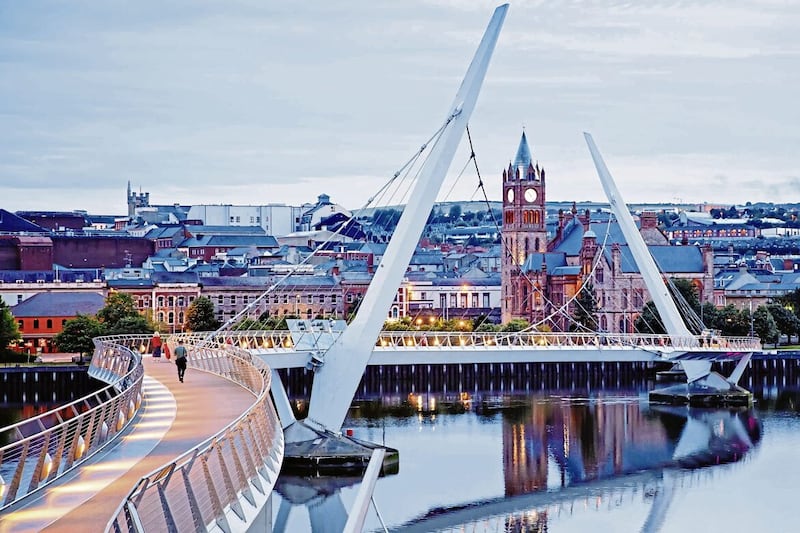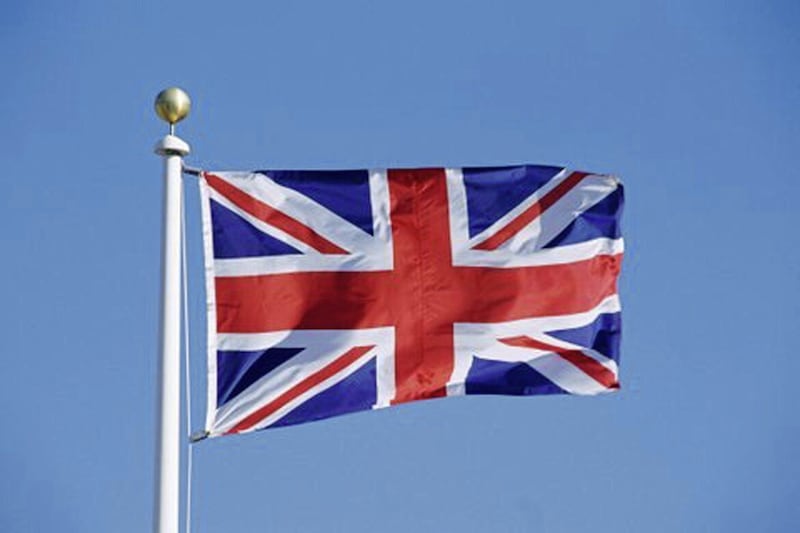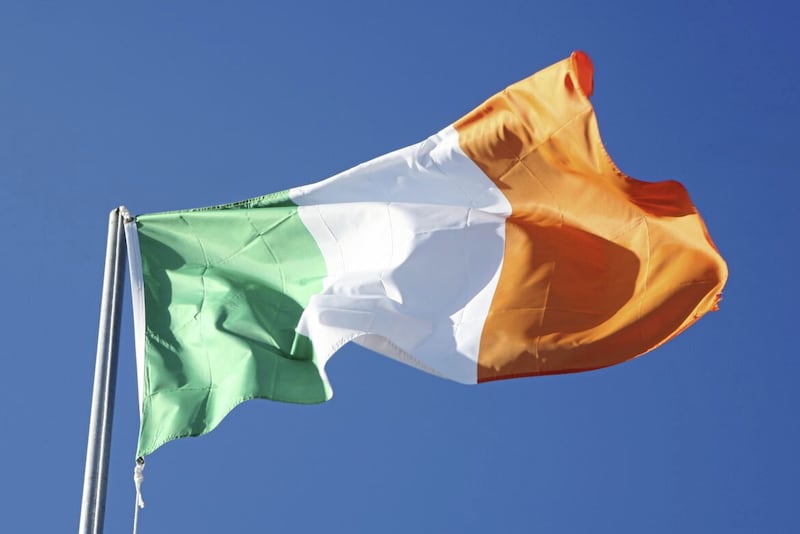What is Northern Ireland?
The Northern Ireland state is a region located in the northeastern part of the island of Ireland.
It is one of the four constituent countries of the United Kingdom, along with England, Scotland, and Wales.
Unlike the other three parts of the UK, it is not part of Great Britain.
Map of Northern Ireland
Northern Ireland shares a border with the Republic of Ireland to the south and west and is surrounded by the Atlantic Ocean to the north and west.
Northern Ireland has six counties: Antrim, Down, Derry, Fermanagh, Tyrone and Armagh.
Northern Ireland is referred to as the north, the north of Ireland, Northern Ireland and sometimes 'the province', depending on an individual's political identity.
Northern Ireland population
In 2023 it had a population of more than 1.9m, accounting for more than a quarter (27%) of the overall population of the island of Ireland and approximately 3% of the total population of the UK.
How many cities are there in Northern Ireland?
Northern Ireland has six cities, Belfast, Derry/Londonderry, Armagh, Newry, Lisburn and Bangor.

Is it Derry or Londonderry?
Most nationalists favor using the name Derry while many unionists use the term Londonderry. Legally, the city and county are called Londonderry, however, the local government district containing the city is officially known as Derry City and Strabane.

What is the history of Northern Ireland?

Northern Ireland’s past has often been complex and tied to the broader history of Ireland.
The northern state was formed in 1921, when Ireland was partitioned by the Government of Ireland Act 1920, creating a devolved government for the six north-eastern counties.
The three other north-eastern counties - Cavan, Donegal and Monaghan - which collectively make up the nine-county province of Ulster, were deliberately not included in the new Northern Ireland state as their inclusion would have meant a majority Catholic/nationalist/republican (CNR) majority.
This demographic divide, along with religious and political differences, has been a source of tension and conflict throughout the region's history.
In the 1920s the majority unionist population and its political allies in the Westminster parliament succeeded in ensuring that the Northern Ireland state had an inbuilt unionist majority, making up two thirds of the population (66%) while the Catholic population accounted for 33.5%.
Much of the Protestant, unionist, loyalist (PUL) community regards itself as being British while in contrast the majority of the Catholic/nationalist/republican (CNR) community aligns itself with the Republic of Ireland and supports reunification of the island.
Over the first 50 years after the formation of the state, unionist parties dominated the Northern Ireland parliament.
However, the political, religious and cultural tensions between the two communities erupted in the late 1960s following demands for the Catholic, nationalist, republican community to be given access to basic civil rights such as social housing and democratic elections.
The conflict that followed, which became known as the Troubles, involved a three-decade period of intense community violence, lasting from 1969 to the late 1990s.
It was characterized by serious violence between nationalist and unionist communities, with paramilitary groups on both sides engaging in bombings, shootings, and other acts of terrorism.
The Royal Ulster Constabulary and British army, who oversaw policing and security, were accused by many in the CNR community of colluding with PUL paramilitary groups to murder Catholics.
The Good Friday Agreement, or Belfast Agreement, signed in 1998, brought an end to the Troubles and established a power-sharing government in Northern Ireland.
Today, Northern Ireland has a devolved government with its own legislative Assembly and Executive.
However, that power sharing government has often collapsed due to political disagreements between nationalist and unionist parties.
What is the flag of Northern Ireland?
Unsurprisingly, the political and cultural divisions between the two communities means that many in each community show their loyalty by aligning themselves to either the British or Irish national flags.
The Union flag, the national symbol of the United Kingdom, is also the official flag of Northern Ireland.

It can be seen flying from lamp posts in majority PUL communities. In contrast, the national flag of the Republic of Ireland, the Tricolour, is flown in predominantly CNR neighbourhoods.
The Northern Ireland flag was the official emblem of the former Northern Ireland government. It is flown by some unionists but no longer has any official status, although several sporting organisations such as FIFA, the Commonwealth Games Federation and the PGA golf tour use the flag to represent teams and athletes from Northern Ireland.

Are Northern Ireland’s demographics changing?
Census figures collated in 2021 show that Catholics now outnumber Protestants in Northern Ireland for the first time.
Some unionist commentators have warned that this could increase the likelihood of calls for a united Ireland.
However, the census figures also showed a growing number of people who do not identify as either solely Irish or British but instead designate themselves as Northern Irish.
The census also shows that a growing part of the Northern Ireland population are from black or minority ethnic backgrounds or have migrated to the state from the EU or elsewhere.
People from a minority ethnic background now account for 3.6% of the population, four times what it was in 2001, with more than 100,000 of those who took part in the census recording their place of birth as being outside of Northern Ireland.
Is Northern Ireland still in the European Union?

A referendum was held in June 2016 to determine if Britain would leave the EU, known as Brexit.
An overall majority of 51.89% voted in favour of leaving the EU while 48.11% of the electorate voted to remain.
In Northern Ireland 55.8% voted to stay within the EU with 44.2% opted to leave.
The Republic of Ireland, as a sovereign nation and existing EU member state, did not take part in the vote.
However, the British decision to leave the EU created a major political and customs problem for Northern Ireland and its 300-mile land border with the Republic of Ireland.
Both Britain and the EU had agreed that there would be no return to physical checks of transport crossing the Irish border.
Unionist political parties in Northern Ireland have opposed an agreement between the British government and EU which would see customs checks on goods coming from the UK at Northern Ireland sea ports.
As of 2023 Northern Ireland remains a part of the UK customs territory, while enforcing the EU’s Customs Code. Northern Ireland remains in the EU’s single market and as such applies the necessary customs regulations and checks. The region also remains part of the Single Electricity Market.
The economic currency of Northern Ireland remains the British pound sterling.
Do I need a visa to visit Northern Ireland?
If you want to come to Northern Ireland to visit, study or work you may need to apply for a visa through UK Visa and Immigration (UKVI).
The Gov.uk website provides a handy tool to check if you need a visa. Simply enter the country that issued your passport or travel documents and whether you want the visa for work, study or visiting.








